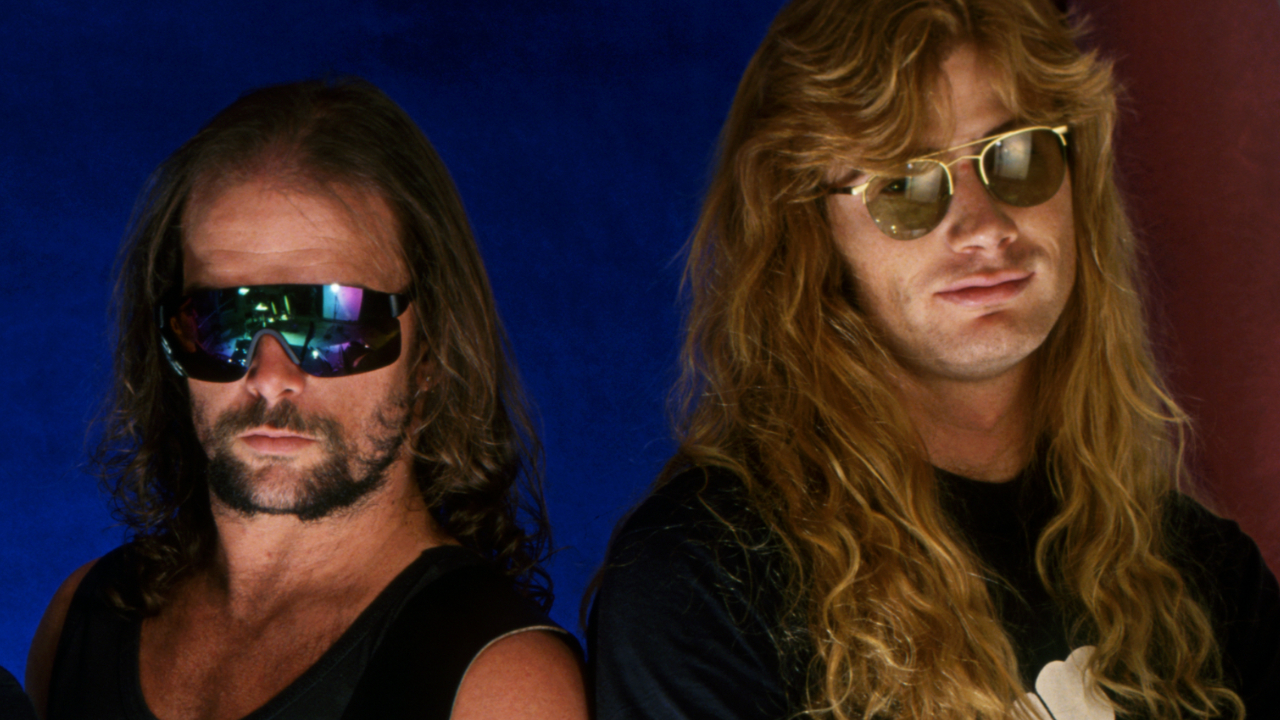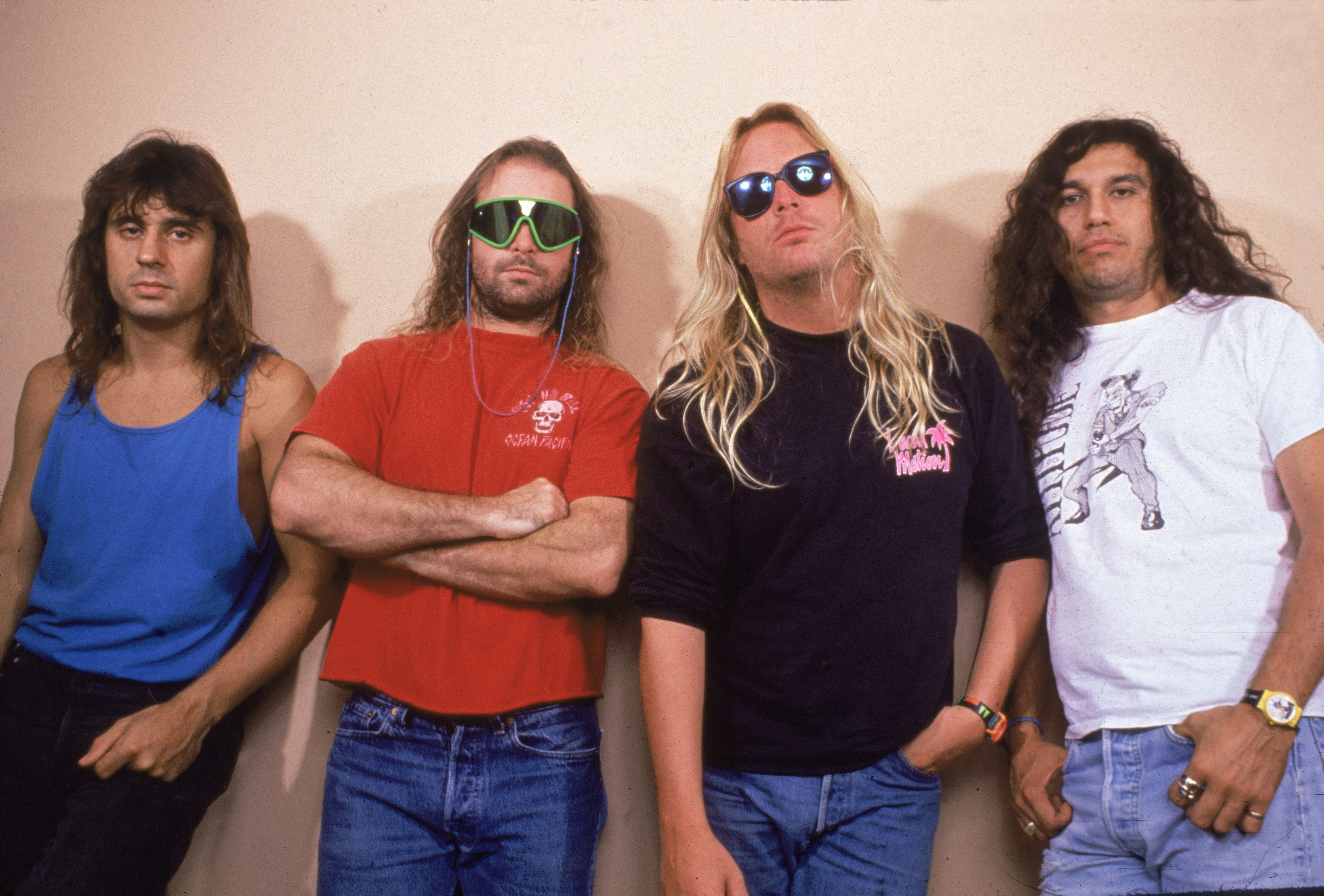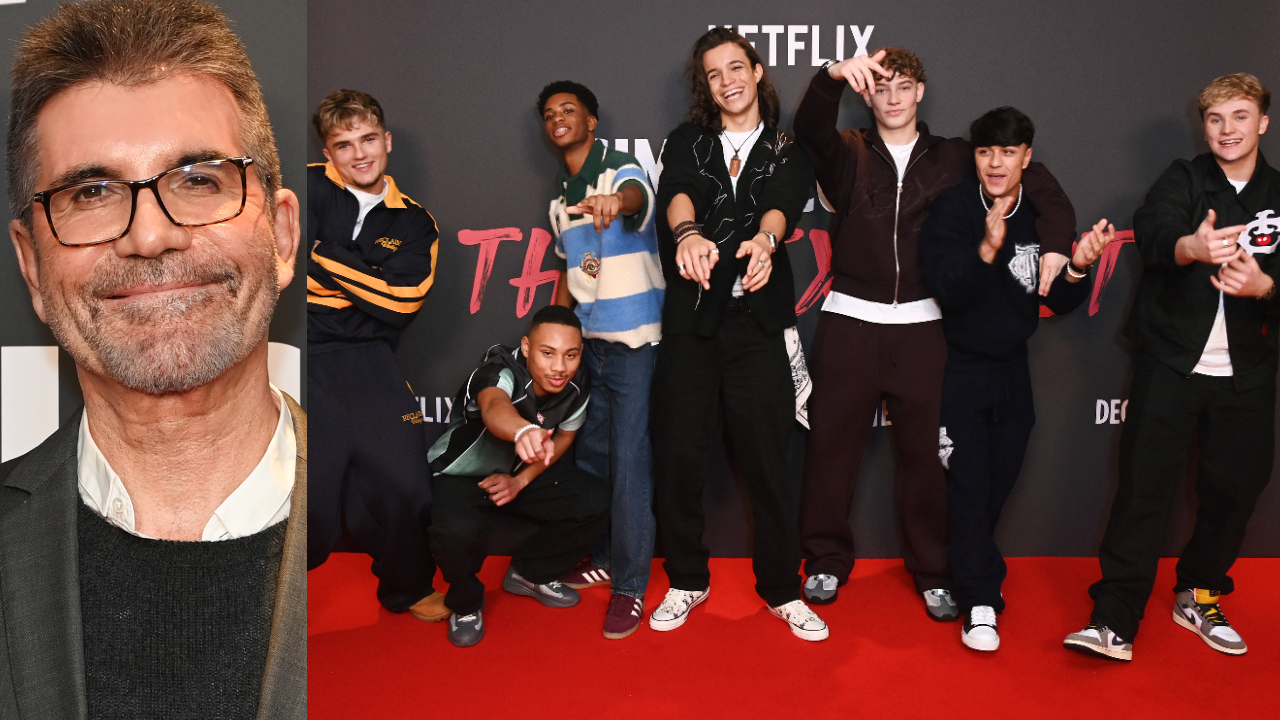“I don’t know how anyone can be in that band for more than a couple hours”: The story of Slayer guitarist Kerry King’s short but whirlwind stint in Megadeth
King played guitar for Megadeth’s first five shows in 1984 – but the partnership was never going to last

Up until the launch of his solo career last year, Kerry King was Slayer through and through. After co-founding the notorious thrash metal rabble in 1981, the tattoo-domed terroriser held the fort, not only never leaving his band but also refusing to entertain any long-term project on the side. Well, apart from that one time…
In 1984, as Slayer were still finding their feet in the burgeoning Cali thrash scene, King found a side-hustle gigging with fellow high-speed agitators Megadeth. The partnership only lasted for five concerts, however, and it didn’t take long for King to return to his original band, more seasoned a player but also clearly unable to coexist with a leader as steadfast as Dave Mustaine.
The shows that King did with Megadeth were the band’s first five. Mustaine started the outfit with bassist David Ellefson after the singer/guitarist got booted from Metallica. He was driven to be faster, harder and more dangerous than his ex-cohorts, but the campaign got off to a stalled start, several members coming and going within the early months. By the time Mustaine, Ellefson and drummer Lee Rausch felt ready for the live arena, they needed a fourth man to round out their ranks.
Fortunately, King and Mustaine had history. The Slayer man told Loudwire in 2015: “This is certainly no offense against [Mustaine’s Metallica replacement] Kirk Hammett, Kirk’s a wonderful friend of mine, but I was lucky enough to see Metallica with Mustaine. I say that because it’s just a rare thing to be able to say!”
He continued: “I was so intrigued by Mustaine, because he was just ripping on guitar and looking out that way somewhere. I can’t do that to this fucking day!”
By 1984, with Slayer having released their debut album Show No Mercy the year prior, the two bands had a mutual contact in guitar maker B.C. Rich, and Megadeth tapped on their shoulder in search of axe-slinger number two. After King was recommended and the two parties met up, the band were blown away by his six-string skills.
Ellefson remembered in 2020: “So Kerry comes to play guitar with us, and he would stand there with just no expression on his face and watch Dave play some gnarly riff like Chosen Ones or The Conjuring. And then Kerry would just stand there and then he’d put his hand on his guitar and play it back note for note. And you’re like, ‘Holy hell! This guy really gets Dave.’”
Sign up below to get the latest from Metal Hammer, plus exclusive special offers, direct to your inbox!
Make no mistake: even though King was interested in the Megadeth gig, his goal was never to defect from Slayer. “At the end of the day, I thought, ‘This is a gigantic learning situation,’” he explained in the Loudwire interview. “And, I also thought, people would see me and know me from Slayer, because we only went to the Bay Area, and people would think, ‘Slayer!’ I had Slayer’s best intentions in mind.”

Kerrydeth made their live debut at Ruthie’s Inn in Berkeley on February 17, 1984. The band played a 14-song headline slot, offering previews of material which would show up on their ellipsis-loaded first three albums: Killing Is My Business… And Business Is Good! (1985), Peace Sells… But Who’s Buying? (1986) and So Far, So Good… So What! (1988). They proceeded to host several more home-state shows, ending at The Stone in San Francisco on April 18. The band wouldn’t play again for six months and, when they did, it was as a three-piece: Mustaine, Ellefson and new drummer Gar Samuelson.
According to Ellefson, King getting to travel and see the further reaches of the Cali thrash scene with Megadeth had a profound effect on Slayer, who spent their earliest years caked in deliberately ugly face-paint.
“When we went up to San Francisco, he saw the thrash scene and met the Exodus guys and all that was going on,” he recalled, “and Kerry saw the light. And he went back home to L.A. and wiped the makeup off of Slayer’s faces.”
In the end, though, King only lasted in Megadeth for two months. Talking to Metal Hammer last year, he hinted that there was scope for him to stick around longer, but that he couldn’t click with Mustaine.
“I think if myself and Dave Mustaine could have coexisted for four years, it would have been a very different band,” he said. “I’m not saying I’d have made them better – I’d have made them different.”
In 2015, he talked more in-depth about the fast turnaround of Megadeth members in the early 80s (which somewhat persists today). “I don’t know how anybody can be in Megadeth for more than a couple hours,” he quipped, “’cause that guy’s crazy!”
During the same chat, the guitarist confirmed that there’d been a feud between Slayer and Megadeth, which kicked off after he left Mustaine’s side. He offered insight into his relationship with his ex-bandmate at a press conference in 2009. “Everybody’s all worried about the beef with me and Dave; we don’t really get along,” he admitted. “But I don’t really have anything against him. I think he’s a great guitar player.”
Fortunately, even if they couldn’t be in the same band together, King and Mustaine were able to embark on some blockbuster tours in later years. In 1990 and ’91, Slayer and Megadeth co-helmed the now-legendary Clash Of The Titans run. Then, two decades later, they joined Metallica and Anthrax for the landmark Big Four shows, and King played Killing Is My Business… cut Rattlehead with Megadeth onstage.
Ultimately, King’s Megadeth membership was a brief dalliance that seemed to launch an on-and-off rivalry, but clearly neither band were damaged by the tensions. If anything, the story of two superstars sharing members like that adds to the mythology and uniqueness of the speed metal scene that ruled California 40 years ago – and launched some of the biggest heavy bands in history.

Louder’s resident Gojira obsessive was still at uni when he joined the team in 2017. Since then, Matt’s become a regular in Metal Hammer and Prog, at his happiest when interviewing the most forward-thinking artists heavy music can muster. He’s got bylines in The Guardian, The Telegraph, The Independent, NME and many others, too. When he’s not writing, you’ll probably find him skydiving, scuba diving or coasteering.


